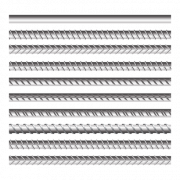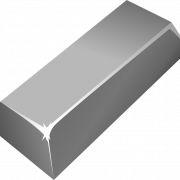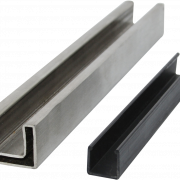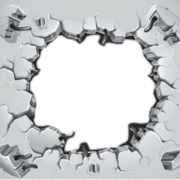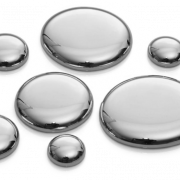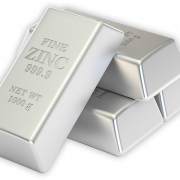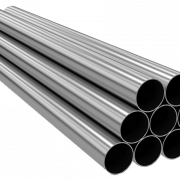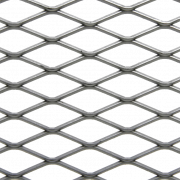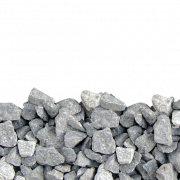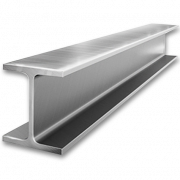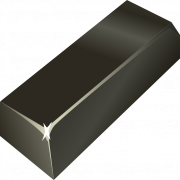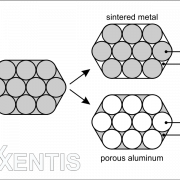Download top and best high-quality free Metal PNG Transparent Images backgrounds available in various sizes. To view the full PNG size resolution click on any of the below image thumbnail.
License Info: Creative Commons 4.0 BY-NC
A metal (from the Greek word métallon, “mine, quarry, metal”) is a lustrous substance that transmits electricity and heat reasonably efficiently when newly produced, polished or shattered. Metals are either malleable or ductile (they may be hammered into thin sheets) (can be drawn into wires). Metals can be chemical elements like iron, alloys like stainless steel, or molecular compounds like polymeric sulfur nitride.
In physics, a metal is defined as any material capable of conducting electricity at absolute zero temperature. Under high pressures, several elements and compounds that aren’t typically classed as metals become metallic. At pressures ranging from 40 to 170 thousand times atmospheric pressure, nonmetal iodine, for example, progressively transforms into a metal. In the same way, certain metals can degrade into nonmetals. At slightly under two million times atmospheric pressure, sodium, for example, becomes a nonmetal.
Metals make up around 95 of the 118 elements in the periodic table (or are likely to be such). Due to their chemistry, two elements that would typically qualify as brittle metals (in physics)—arsenic and antimony—are frequently referred to as metalloids in chemistry (predominantly non-metallic for arsenic and balanced between metallicity and nonmetallicity for antimony). Due to a lack of widely agreed definitions of the categories involved, the borders between metals, nonmetals, and metalloids change slightly, making the number inexact.
The word “metal” is used more broadly in astrophysics to refer to any chemical elements in a heavier star than helium, rather than simply conventional metals. In this sense, the first four “metals” that accumulate in star cores through nucleosynthesis are carbon, nitrogen, oxygen, and neon, all chemically nonmetals. Throughout its existence, a star fuses lighter elements, primarily hydrogen and helium, into heavier atoms. An astronomical object’s metallicity refers to the proportion of its mass made up of heavier chemical elements in this context.
Metals, as chemical elements, makeup 25% of the Earth’s crust and are used in almost every area of contemporary life. Because of the strength and durability of various metals, they are commonly used in high-rise and bridge construction and most cars, home appliances, tools, pipes, and train tracks. Coinage metals used to be limited to precious metals, but coinage metals have expanded to include at least 23 chemical elements in the contemporary period.
Copper is considered to have started the history of refined metals around 11,000 years ago. Before the first recorded occurrence of bronze in the 5th millennium BCE, gold, silver, iron (as meteoric iron), lead, and brass were also in use. The manufacture of early types of steel, the discovery of sodium—the first light metal—in 1809, the advent of contemporary alloy steels, and, after the conclusion of World War II, the development of increasingly sophisticated alloys are all examples of subsequent advancements.
Download Metal PNG images transparent gallery.
- Metal Frame PNG Clipart
Resolution: 960 × 720
Size: 93 KB
Image Format: .png
Download
- Metal Nail PNG Clipart
Resolution: 800 × 800
Size: 49 KB
Image Format: .png
Download
- Metal PNG Free Image
Resolution: 700 × 525
Size: 74 KB
Image Format: .png
Download
- Metal PNG File
Resolution: 1506 × 750
Size: 164 KB
Image Format: .png
Download
- Metal Frame PNG Free Download
Resolution: 720 × 720
Size: 681 KB
Image Format: .png
Download
- Metal Sheet PNG Picture
Resolution: 700 × 490
Size: 155 KB
Image Format: .png
Download
- Metal PNG HD Image
Resolution: 1280 × 1158
Size: 86 KB
Image Format: .png
Download
- Metal Ball PNG Free Download
Resolution: 1024 × 1024
Size: 731 KB
Image Format: .png
Download
- Metal
Resolution: 1024 × 689
Size: 838 KB
Image Format: .png
Download
- Metal Sheet
Resolution: 1600 × 1200
Size: 1031 KB
Image Format: .png
Download
- Metal PNG Pic
Resolution: 1118 × 916
Size: 791 KB
Image Format: .png
Download
- Metal PNG Download Image
Resolution: 1233 × 1838
Size: 792 KB
Image Format: .png
Download
- Metal PNG High Quality Image
Resolution: 778 × 1171
Size: 1077 KB
Image Format: .png
Download
- Metal Frame
Resolution: 850 × 736
Size: 712 KB
Image Format: .png
Download
- Metal Frame PNG
Resolution: 1024 × 435
Size: 713 KB
Image Format: .png
Download
- Metal Ball
Resolution: 999 × 992
Size: 677 KB
Image Format: .png
Download
- Metal Bucket
Resolution: 900 × 900
Size: 1257 KB
Image Format: .png
Download
- Metal PNG Images
Resolution: 2314 × 2400
Size: 375 KB
Image Format: .png
Download
- Metal Frame PNG Image
Resolution: 1280 × 1278
Size: 141 KB
Image Format: .png
Download
- Metal Sheet PNG
Resolution: 1062 × 752
Size: 394 KB
Image Format: .png
Download
- Metal PNG Image File
Resolution: 1280 × 1280
Size: 376 KB
Image Format: .png
Download
- Metal Ball PNG
Resolution: 891 × 890
Size: 457 KB
Image Format: .png
Download
- Metal PNG Photo
Resolution: 957 × 619
Size: 430 KB
Image Format: .png
Download
- Metal Ball PNG Image
Resolution: 741 × 746
Size: 347 KB
Image Format: .png
Download
- Metal Frame Transparent
Resolution: 853 × 1280
Size: 821 KB
Image Format: .png
Download
- Metal Bucket PNG
Resolution: 816 × 1141
Size: 552 KB
Image Format: .png
Download
- Metal PNG Image HD
Resolution: 2291 × 2292
Size: 496 KB
Image Format: .png
Download
- Metal Sheet PNG Image
Resolution: 1367 × 1920
Size: 595 KB
Image Format: .png
Download
- Metal PNG File Download Free
Resolution: 670 × 501
Size: 206 KB
Image Format: .png
Download
- Metal PNG
Resolution: 1000 × 795
Size: 472 KB
Image Format: .png
Download
- Metal Nail
Resolution: 800 × 600
Size: 86 KB
Image Format: .png
Download
- Metal PNG Image
Resolution: 765 × 441
Size: 169 KB
Image Format: .png
Download
- Metal Sheet Transparent
Resolution: 931 × 653
Size: 519 KB
Image Format: .png
Download
- Metal Transparent
Resolution: 1500 × 552
Size: 724 KB
Image Format: .png
Download
- Metal Bucket PNG Image
Resolution: 682 × 800
Size: 355 KB
Image Format: .png
Download
- Metal Ball Transparent
Resolution: 2048 × 2048
Size: 530 KB
Image Format: .png
Download
- Metal PNG Clipart
Resolution: 674 × 474
Size: 99 KB
Image Format: .png
Download
- Metal Chain
Resolution: 3488 × 426
Size: 1642 KB
Image Format: .png
Download
- Metal Chain PNG
Resolution: 3461 × 2633
Size: 1569 KB
Image Format: .png
Download
- Metal Nail PNG
Resolution: 1000 × 1000
Size: 168 KB
Image Format: .png
Download
- Metal Bucket Transparent
Resolution: 1000 × 1000
Size: 494 KB
Image Format: .png
Download
- Metal PNG Free Download
Resolution: 1280 × 894
Size: 386 KB
Image Format: .png
Download
- Metal Bucket PNG Clipart
Resolution: 864 × 923
Size: 390 KB
Image Format: .png
Download
- Metal Bucket PNG Free Download
Resolution: 2374 × 1438
Size: 138 KB
Image Format: .png
Download
- Metal PNG Picture
Resolution: 800 × 724
Size: 53 KB
Image Format: .png
Download
- Metal Sheet PNG Clipart
Resolution: 800 × 600
Size: 92 KB
Image Format: .png
Download
- Metal Chain PNG Image
Resolution: 800 × 600
Size: 202 KB
Image Format: .png
Download
- Metal Sheet PNG Free Download
Resolution: 2449 × 2449
Size: 269 KB
Image Format: .png
Download
- Metal Nail PNG Image
Resolution: 1000 × 1000
Size: 278 KB
Image Format: .png
Download
- Metal Nail Transparent
Resolution: 1353 × 940
Size: 425 KB
Image Format: .png
Download
- Metal Ball PNG Clipart
Resolution: 715 × 715
Size: 258 KB
Image Format: .png
Download





